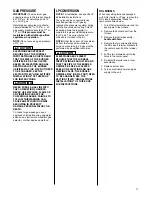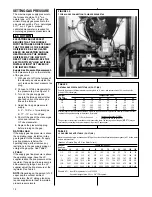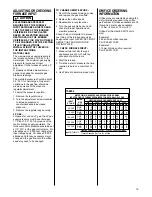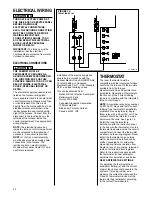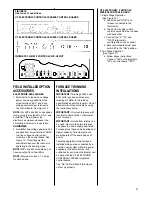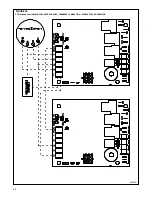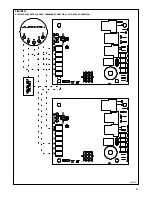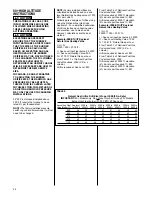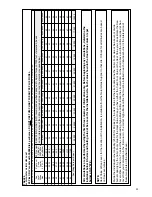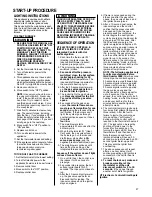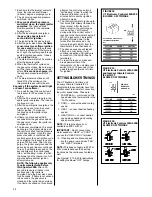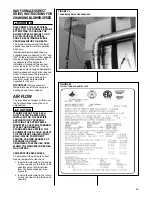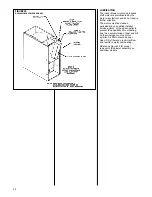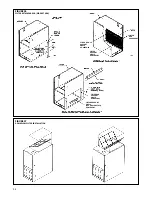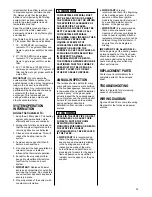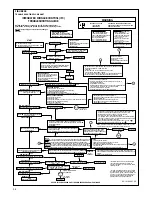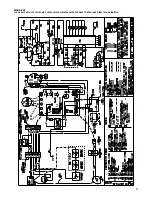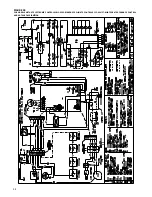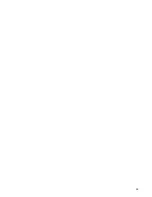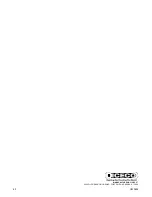
31
SAFETY FEATURES
LIMIT CONTROL
The high limit cut-off temperature is set
at the factory and cannot be adjusted.
The temperature setting prevents the
air temperature leaving the furnace
from exceeding the maximum outlet air
temperature, which, if exceeded, will
shut the furnace down.
There are several reasons for a limit
switch to open and almost always
involve low airflow through the furnace.
1. A dirty or restricted air filter.
2. A dirty or restricted cooling coil.
3. Undersized or restricted return air
system.
4. Undersized or restricted supply air
system.
5. A problem affecting the main
blower:
A. A wrong speed tap selection.
B. Failing motor bearings.
C. Low voltage to the motor.
D. Dirty blower wheel.
E. Wrong motor rotation.
F. Blower wheel slipping on the
F.
motor shaft.
6. Overfiring the furnace with too much
gas pressure.
7. Ventilation problems.
FLAME ROLL-OUT
SAFETY SWITCHES
Furnaces are equipped with safety
switches to protect against flame roll-
out conditions in the burner
compartment, which, if tripped, will
terminate the heating cycle. In the
event of a flame roll-out condition, the
switch will shut the furnace down. If a
switch is tripped, it must be manually
reset. DO NOT jumper or reset this
switch. If this switch should trip, a
qualified installer, service agency or
the gas supplier should be called to
diagnose and/or correct the source of
tripping. If this unit is mounted in a
closet, the door must be closed when
making this check.
PRESSURE SWITCH
This furnace is equipped with a
normally-open pressure switch that
monitors pressure conditions within the
furnace vent system during the heating
cycle.
There are several reasons for the
pressure switch not to close.
1. An inoperative induced draft blower.
2. A loose or leaky pressure switch
hose.
3. A blockage in the vent.
4. Severe downdrafts canceling the
draft from the inducer fan.
5. A leaky gasket at the induced draft
blower.
6. Improperly sized or installed vent.
The pressure switch contacts must
open before the unit can go through
another heating cycle.
See troubleshooting chart in this book
for troubleshooting recommendations.
3. Operate the furnace.
4. When the thermometer in the
supply air duct stops rising
(approximately five minutes),
subtract the return air temperature
from the supply air temperature.
The difference is the temperature
rise.
5. Compare the measured
temperature rise to the approved
temperature rise range listed on
the furnace name plate. See
Figure 22.
If the measured temperature rise is
above the approved range, the air flow
is too low. More air must be moved by
speeding up the blower, by removing
restrictions in the duct system, or by
adding more supply or return air duct. If
the measured temperature rise is below
the approved range, the air flow is too
much. Use lower speed tap on the
multi-speed blower.
Ideally the measured temperature rise
should be in the middle of the range.
IMPORTANT:
Some high-efficiency
filters have a greater than normal
resistance to airflow. This can
adversely affect furnace operation. BE
SURE TO CHECK AIRFLOW if using
any filter other than factory-provided
filter.

